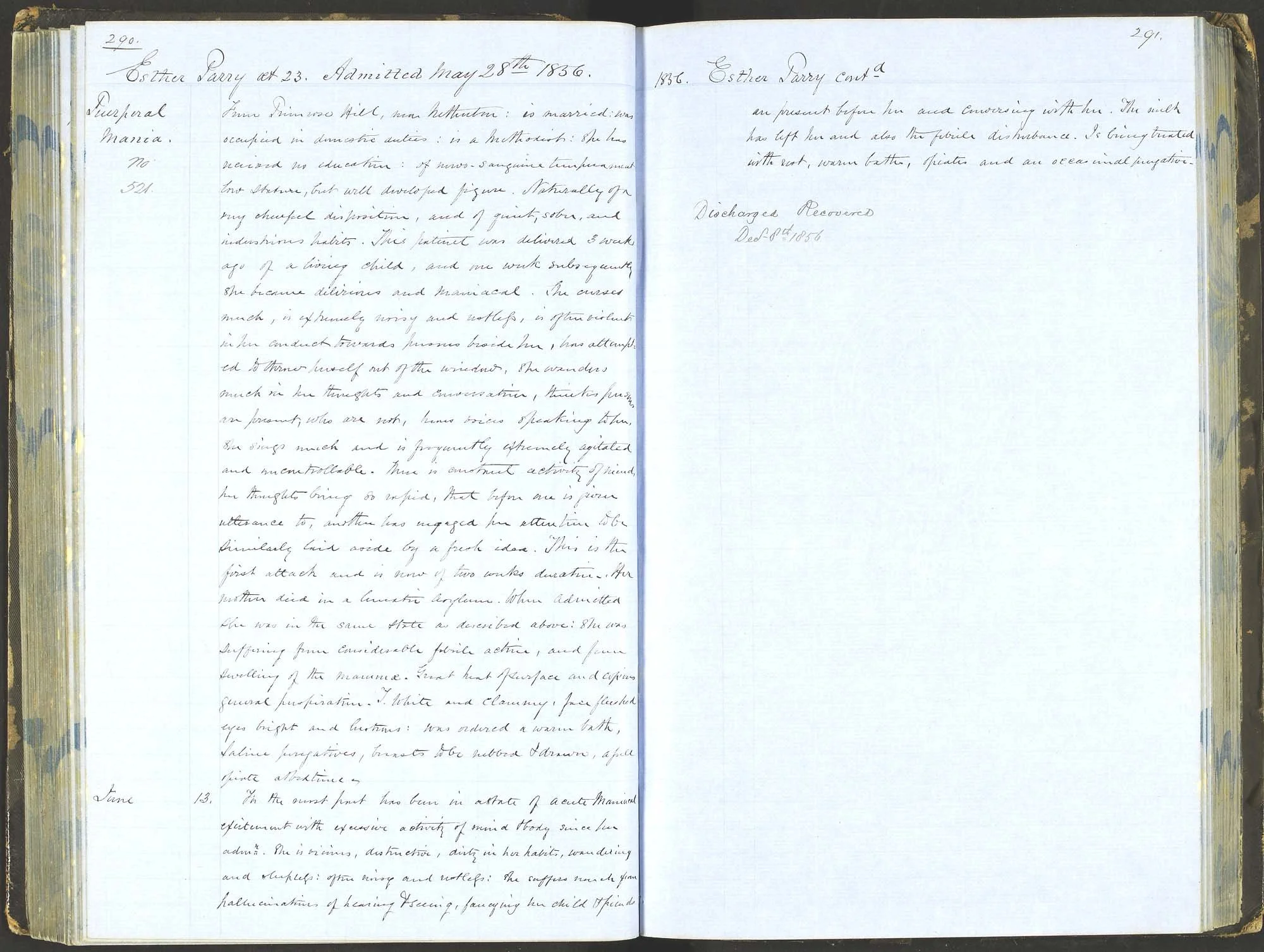OUTSIDE THE ASYLUM
Can you help George Marshall Medical Museum with a spot of family history research to find out about some people who were admitted to the Worcester City and County Lunatic Asylum in the 19th century?
Our aim is to share more patients’ stories, and to find out about their lives before admission and (where possible) after discharge.
esther parry
find out more about esther parry
Esther Parry was admitted to Powick Hospital at the age of 23 with Puerperal Mania. This article tells the story of her life surrounding her admission.
In 1817 on the 6th of February James Mackey married Elizabeth Hackett in Dudley, Worcestershire. James worked as a cordwainer, otherwise known as a shoemaker. The couple had their first child, William, five years after their marriage on April the 5th 1822. Elizabeth had six more children, Jospeh, James, Elizabeth, Eliza and Esther. Their daughter Esther was born on the 24th of October 1831. Esther was baptised shortly after, on the 20th of November. On this day, James and Elizabeth had the whole family baptised, including themselves.
In 1841, the family lived in Primrose, Dudley. James Mackey, the head of the household, worked as a sexton, which is defined as an official of the church charged with maintaining the church building. Two of the eldest sons worked themselves, William as a Blacksmith and Jospeh as a Cordwainer. Esther was 9 at this time, and now had two younger siblings, David aged 9 and Sarah aged 4.
The children’s mother Elizabeth did not live with the family in 1841. Instead, Elizabeth was housed at Droitwich Lunatic Asylum. This meant James did not have a wife to rely on for housework and child rearing as was expected in the Victorian household. The upbringing of the Mackey children was therefore likely a challenge.
Ten years later, Elizabeth sadly passed away in Droitwich. By this time, Esther had left the home of her father in order to find work. In 1851, Esther was living as a servant in the household of Coal Master Joseph Hackett. Joseph had a wife, three daughters and one son that Esther would have helped care for.
In the winter of 1854, Esther Mackey married David Parry in Dudley. Just two years later, Esther was admitted to Powick Hospital on May the 28th 1856. Esther was diagnosed with Puerperal Mania after giving birth to a child three weeks previously. Her notes state she became “delirious and maniacal. She curses much is … noisy and restless.” Prior to admission, Esther had also “attempted to throw herself out of the window.” She also had hallucinations where she believed “persons are present who are not, [and] hears noises speaking to her.” It notes that “her mother died in a lunatic asylum,” who from census’ we know to be Elizabeth.
Two weeks after her admission she continued to have many symptoms including “hallucinations of hearing” and “maniacal excitement.” Staff also noted their method of treatment which involved “rest, warm baths, opiates and an occasional purgative.” Esther was discharged just under seven months after her admission.
In 1861 Esther was living with her husband David in Netherton, Worcestershire. By this time they had one son, Samuel, born in 1860. The child Esther gave birth too prior to her Powick stay sadly passed away. Esther worked as a Shop Keeper and David as a Coal Miner. These occupations soon changed as by the next census, Esther did not work, and David was employed as a clerk in a colliery. They also had three more sons by this time, John, David and Fredrick.
Records tell a more complicated story post 1871 when Esther and David were last recorded living together in Worcestershire. In 1881 Esther lived unemployed at Black Brook with her four-year-old daughter Rosa Lilian Parry. By 1891 Esther was recorded a widow and worked on her own account living with her adult son Samuel Parry who was 32 years old. After this, Esther moved to a workhouse where she most likely lived until she passed away. Her 24-year-old daughter Rosa went on to live with her brother David and his wife Sarah.
Research by Alice Fairclough, 2025.
Click here to view Esther’s asylum notes.
Go back to find out about more people who were patients at the asylum.



